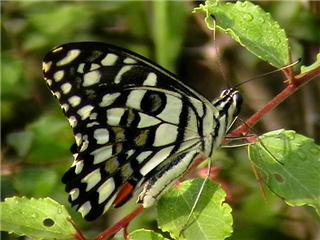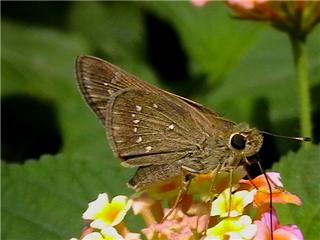
Lime Butterfly

Common Rice Swift
Butterfly Conservation
-Dr. Surya Prakash
My love towards butterfly started way back in early 70s when I was a young child of 8 or 9 years. We were living in a small town of Rajasthan –Pali
where my father was teaching Botany in a govt. college. There was a beautiful park in our colony called ‘Gandhi Udhyan” A fresh water canal was there feeding to another district around 75 km away where I was born Jodhpur – A mini Bombay now.
Well, I was a very naughty boy in my childhood so usually after my school is over I would go to home change uniform, eat and then slip into this park
full of many kinds of butterflies I did not know name of a single butterfly at that time but I used to recognize them by their size and colures of wings. I used to catch them, would bring them to my home and put them in a cage made up of wire mesh, decorated
with all fresh flowers plants and water, my younger brother used to help me in all my endeavors, then would start waiting for my father to come back from the college
in the evening for identification of these beautiful creatures of nature. before releasing them to the same garden. One day Gardner of that park caught me and took me to my grandfather with a complain that I catch butterflies from garden and then kill
them, He had already given me a name ‘Papla” (Sinner) in Marwari language at that time.
My grandfather started smiling and showed that Gardner the cage where I used to keep butterflies for identification from my botanist
father. It was the time when that Gardner realized that how much fascination I really have for butterflies.
Today I know that they are Commanders, Sailors, Sergeants, Tigers, Leopards, Raja, Queen etc.
India is a home to around 1500 butterflies species among 17000 species that are found all over the world, constituting 65% of total Indian fauna. North
eastern India, Kerala, Bangalore, Arunachal Pradesh, Himalayas, Nilgiri Hills, Rohtang pass, Tiger Hills in J&K, Western Ghats ,Assam are the major areas in the country harboring maximum species of these Lepeidoptera.
Assam alone has over 500 species of butterflies many of which were commonly seen in 20th century, have now dwindled drastically and this decline is so rapid of the third world today that if not checked now, this downward trend will become
irreversible soon in ongoing global environmental crisis.
In most part of the country butterflies are treated as non target species in the wild life conservation and management programmes. In the present scenario
of “Protected Area Network” set up by the government, is directed towards iconic fauna like
Project Tiger, Asiatic Lions Elephants,
Rhinocerose, Vultures etc. all naturalists are not against it but at the same time these small, beautiful and agriculturally important creatures must not be ignored. Nature and poachers do not differentiate
any animal, insect, or plant , their main aim is to earn money for which they can go to any extent of crime. When nature eradicates any species it takes its own time which is very slow process and may take as long as millions of years for natural extinction
but, when a poachers kill any species or a species go to extinction due to human negligence the process is so rapid that in just one blink of eye , species vanishes. Its not only butterflies but Gangetic dolphins, forest owl,and many aquatic species are at
the verge of extinction.
The nature has set up a system in an ecosystem called food chain where there are primary consumers, secondary consumers and tertiary consumers so the importance
of inter-species-relationships among different species and landscape level ecological processes taking place through smaller life must not be ignored.
-----To be continued